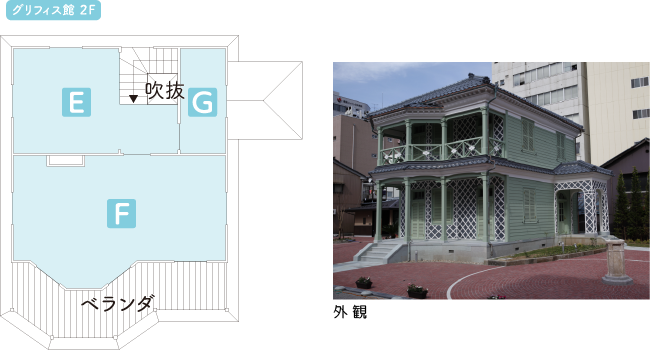The Museum and Exhibition
The House
The Fukui Domain built two houses of similar design for teachers from western countries. Both houses were of a vibrant light green and reflected early Meiji architecture. Old pictures of Tokyo have revealed homes with verandas and Namako walls, a mix of Japanese and Western architecture. This exterior design was brought on by the rapid influx of Western culture from the mid-nineteenth century. Japanese artisans at the time had little experience with brick and stone, so this new design was brought about by creative ways to make due. As the years passed, this hybrid architecture would be replaced by completely western designs and materials, the so called “youkan” (western building). This reconstructed house stands as a revival of this unique architecture around the Meiji Restoration.
Griffis lived in a samurai manor while the house was first being constructed. In the end, he would only spend four months in this specially-made home. Yet for even that brief period, the home was lively with Griffis’s students. Unfortunately, the house would burn down two years after Griffis left Fukui, but the neighboring home would stand for many years until it too was lost to a fire in 1936. This home would be known as the Ijin-kan or “home for western residents.”
This reconstruction of Griffis’s home was designed after investigating documents related to the home and by referencing remaining pictures of the Ijin-kan. Its proportions are symmetric with a reserved aesthetic expression. In addition, the structure uses Shakudani Rocks—largely unique to Fukui and often mined from nearby Asuwa Mountain before—that were donated by the people of Fukui. The inside of the museum offers a view of 1871 Fukui through the eyes of Griffis. It also provides details on his academic work, connections to famous samurai of the Meiji, and the lasting impact that he has had on Fukui.
Exhibition
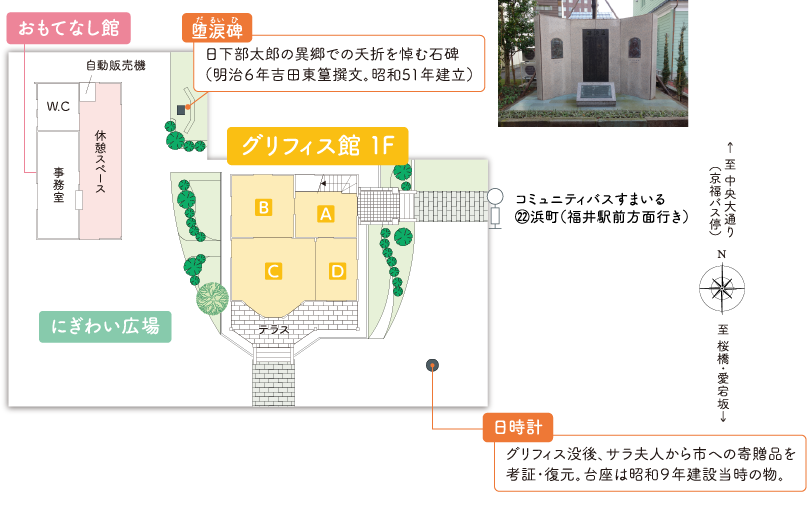


A hall lined with portraits. Here you can see Griffis and his connections to various shapers of Japanese history.
Griffis frequently ventured around town and the surrounding countryside. He recorded much of what he saw in his letters and diaries. These descriptions have been brought to life through watercolor paintings.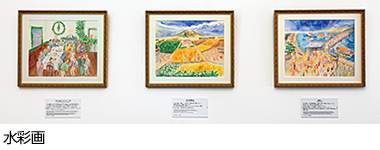
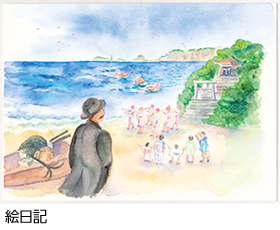

A record of his achievements while he taught at the Meishinkan, available to browse by touch panel.
A space reflecting his study. The exhibit in this room contains letters to his family as well as the prominent samurai, Yuri Kimimasa.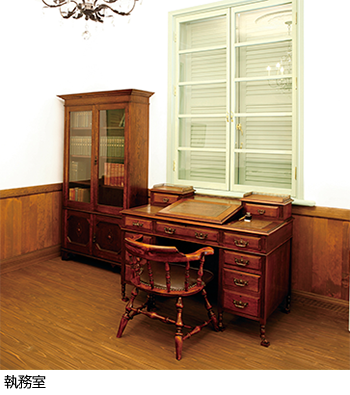
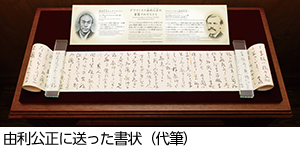

Pictures of Griffis along with a collection of his written works. There are also pictures and materials in his final trip to Japan, just a year before he passed away. Finally, a small introduction to the relationship between Fukui City and the City of New Brunswick.
